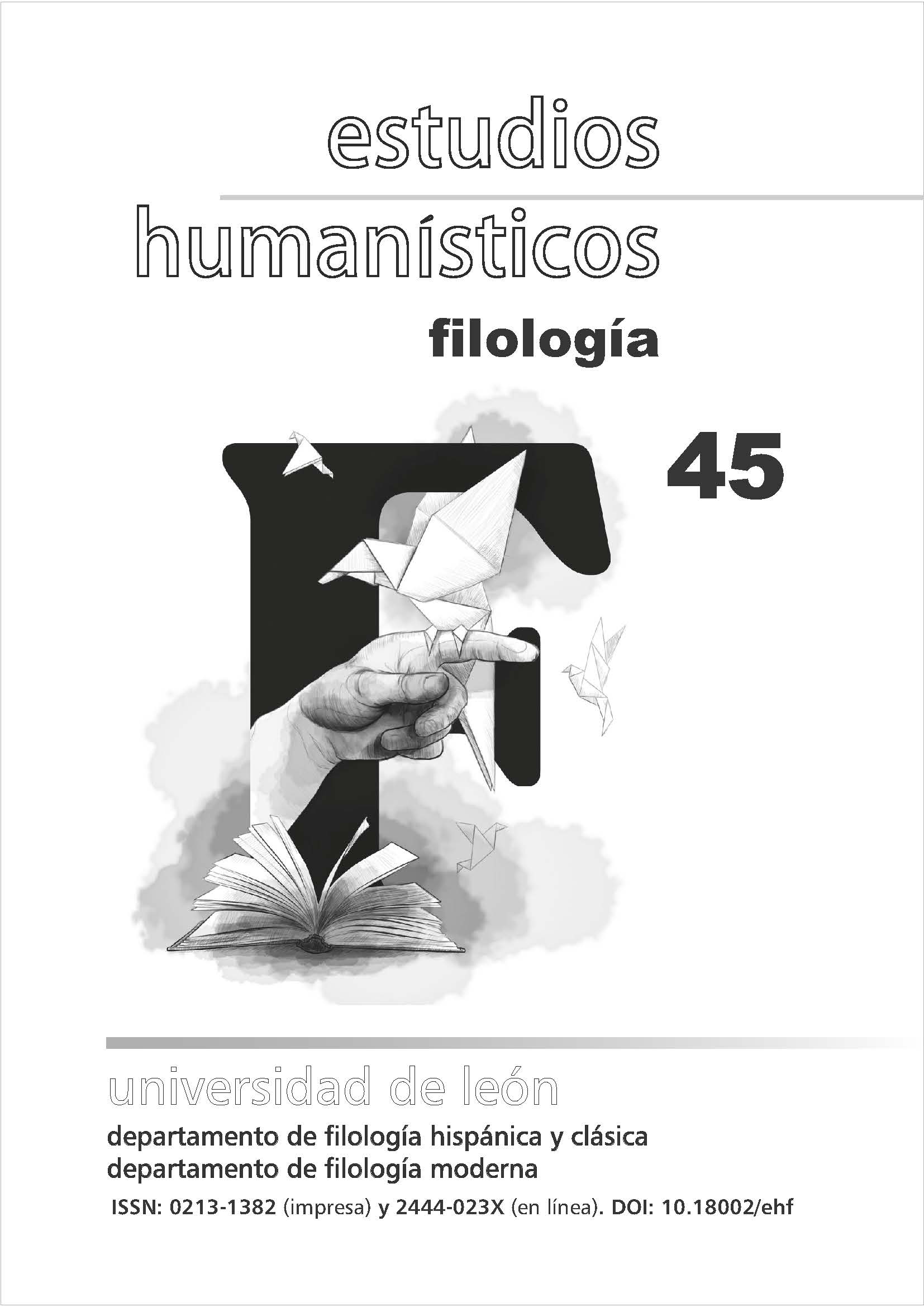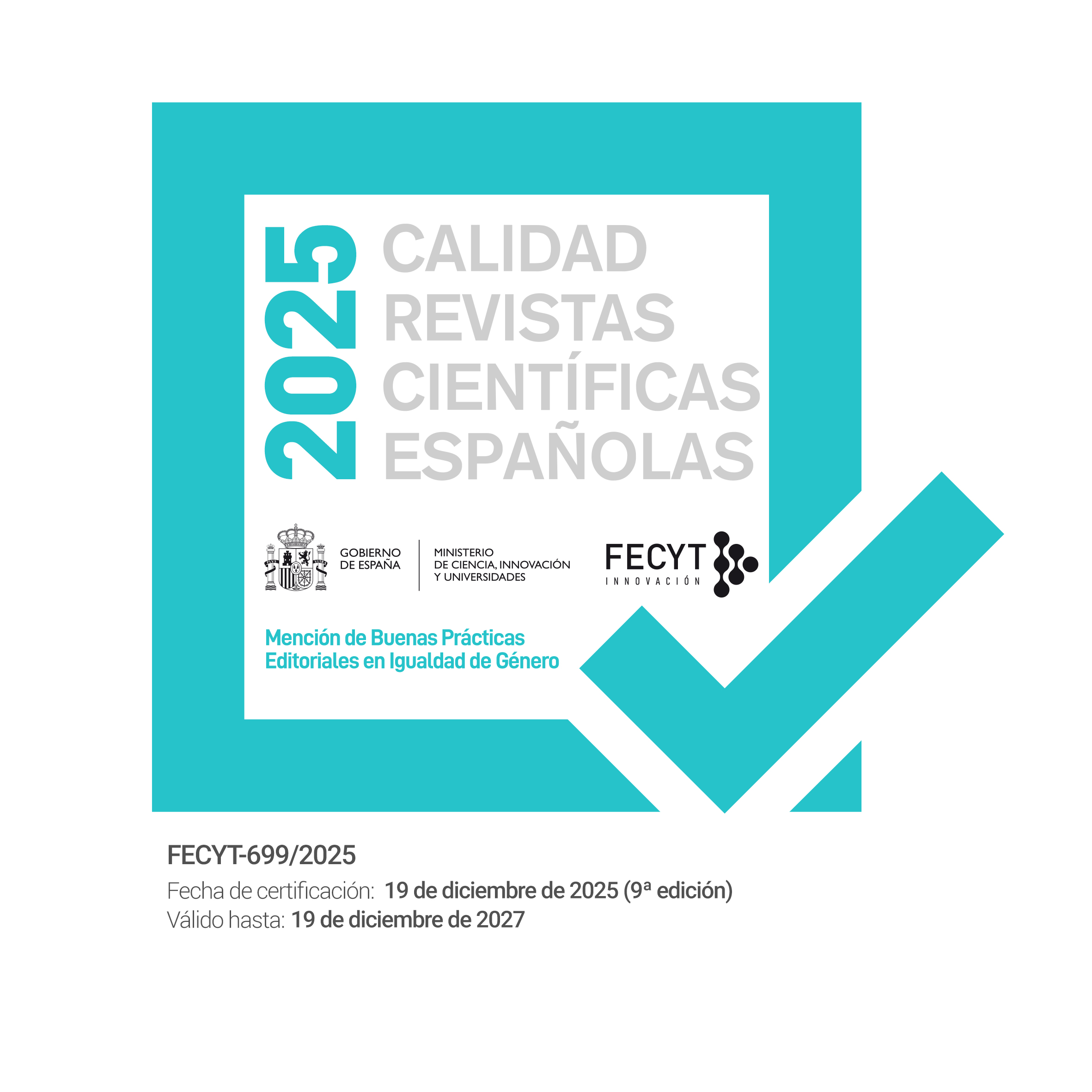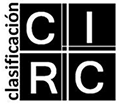Written Subject Pronoun Expression among Spanish Heritage Language Learners
DOI :
https://doi.org/10.18002/ehf.i45.7698Mots-clés :
language variation, sociolinguistics, subject pronoun expression, heritage languagesRésumé
Este artículo analiza la producción del pronombre sujeto en español desde una nueva perspectiva: el género escrito. A través del análisis de 90 ensayos escritos por estudiantes de español como lengua de herencia, el presente estudio ofrece avances en el entendimiento del comportamiento del pronombre sujeto en la escritura. Aunque el comportamiento del pronombre sujero varía en cuanto a su frecuencia de uso en las diferentes variedades de español, se han encontrado patrones similares que predicen el comportamiento de dichos pronombres (Carvalho et al., 2015). El presente estudio explora si estos patrones de comportamiento (explorados hasta ahora solo en el ámbito de la oralidad) se mantienen en la escritura de nuestros participantes: hablantes de herencia.
Téléchargements
Métricas alternativas
Références
Abreu, L. (2009). Spanish subject personal pronoun use by monolinguals, bilinguals, and second language learners. PhD diss., University of Florida.
Abreu L. (2012). Subject pronoun expression and priming effects among bilingual speakers of Puerto Rican Spanish. In Geeslin & Díaz-Campos (Eds.), Selected proceedings of the 14th Hispanic Linguistics Symposium (pp. 1-8). Cascadilla Proceedings Project.
Bayley, R., & Pease-Álvarez, L. (1996). Null and expressed pronoun variation in Mexican-descent children’s Spanish. In J. Arnold, R. Blake & B. Davidson (Eds.), Sociolinguistic variation: Data, theory, and analysis (pp. 85-99). Stanford: Center for the Study of Language and Information.
Bayley, R., & Pease-Álvarez, L. (1997). Null pronoun variation in Mexican-descent children's narrative discourse. Language Variation and Change, 9(3), 349-371.
Beaudrie, S., Ducar, C., & Potowski, K. (2014). Heritage language teaching: Research and practice. McGraw-Hill Education.
Bentivoglio, P. (1987). La posición del sujeto en el español de Caracas: un análisis de los factores lingüísticos y extralingüísticos. In R. Hammond & M. Resnick (Eds.), Studies in Caribbean Spanish dialectology (pp. 13-23). Georgetown University Press.
Bessett, R. M. (2017). Testing English influence on first-person singular ‘yo’ subject pronoun expression in Sonoran Spanish. Contemporary Trends in Hispanic and Lusophone Linguistics, 15, 355-372.
Biber, D. (1995). Dimensions of register variation: A cross-linguistic comparison. Cambridge University Press.
Biber, D., & Conrad, S. (2001). Quantitative corpus-based research: Much more than bean counting. TESOL Quarterly, 35, 331-336.
Biber, D., & Conrad, S. (2009). Register, genre, and style. Cambridge University Press.
Blommaert, J., Westinen, E., & Leppänen, S. (2015). Further notes on sociolinguistic scales. Intercultural Pragmatics, 12(1), 119-127
Bybee, J. (2002). Word frequency and context of use in the lexical diffusion of phonetically conditioned sound change. Language Variation and Change, 14, 261-290.
Carreira, M. (2004). Seeking explanatory adequacy: A dual approach to understanding the term “heritage language learner.” Heritage Language Journal, 2(1), 1-25.
Carreira, M., & Kagan, O. (2011). The results of the National Heritage Language Survey: Implications for teaching, curriculum design, and professional development. Foreign Language Annals, 44(1), 40-64.
Carvalho, A. M. (2012). Corpus del español en el sur de Arizona (CESA). University of Arizona.
Carvalho, A. M., & Child, M. (2011). Subject pronoun expression in a variety of Spanish in contact with Portuguese. In Selected Proceedings of the 5th Workshop on Spanish Sociolinguistics (pp. 14-25).
Carvalho, A. M., Orozco, R., & Shin, N. L. (Eds.). (2015). Subject pronoun expression in Spanish: A cross-dialectal perspective. Georgetown University Press.
Dracos, M. (2018). Teacher talk and Spanish subject personal pronouns. Journal of Spanish Language Teaching, 5(1), 1-15.
Ezeizabarrena, M. J. (2012). Overt subjects in early Basque and other null-subject languages. International Journal of Bilingualism, 17(3). https://doi.org/10.1177/1367006912438997
Fairclough, M. (2006). Spanish/English interaction in U.S. Hispanic heritage learners’ writing. In Globalization and language in the Spanish-speaking world (pp. 76-93). Palgrave Macmillan.
Flores-Ferrán, N. (2004). La expresión del sujeto en el español de Nueva York: el factor de la perseverancia. ASJU International Journal of Basque Linguistics and Philology, 38(1): 349-362.
Geeslin, K. L., & Gudmestad, A. (2011). Using sociolinguistic analyses of discourse-level features to expand research on L2 variation: Native and non-native contrasts in forms of Spanish subject expression. In L. Plonsky & M. Schierloh (Eds.), Selected proceedings of the 2009 Second Language Research Forum: Diverse contributions to SLA (pp. 16-30). Cascadilla Proceedings Project.
Gevers, J. (2018). Translingualism revisited: Language difference and hybridity in L2 writing. Journal of Second Language Writing, 40, 73-83.
Givón, T. (1983). Topic continuity in discourse: The functional domain of switch-reference. In J. Haiman & P. Munro (Eds.), Switch-reference and universal grammar (pp. 51-81). John Benjamins.
Hochberg, J. (1986). Compensation for /s/ deletion in Puerto Rican Spanish. Language, 62, 609-621.
Hurtado, L. M. (2005). Syntactic-semantic conditioning of subject expression in Colombian Spanish. Hispania, 88(2), 335-348.
Johnson, D. E. (2009). Getting off the GoldVarb standard: Introducing Rbrul for mixed‐effects variable rule analysis. Language and linguistics compass, 3(1), 359-383.
Johnson, D. E. (2022). Rbrul, Package version 3.1.6.
Labov, William. (1984). The intersection of sex and social factors in the course of language change. Paper presented at NWAVE, Philadelphia.
LaCasse, D. (2019) The persistence of expression: Clusivity, partial co-reference, and socioeconomic differentiation of first-person plural subject pronoun expression in Spanish. Studies in Hispanic and Lusophone Linguistics, 12(1). DOI:10.1515/shll-2019-2002
Lastra, Y., & Martín Butragueño, P. (2015). Subject pronoun expression in oral Mexican Spanish. In A. M. Carvalho, R. Orozco. & N. L. Shin (Eds.), Subject pronoun expression in Spanish. A cross-dialectal perspective (pp. 39-57). Georgetown University Press.
Linford, B. (2016). The second-language development of dialect-specific morpho-syntactic variation in Spanish during study abroad. ProQuest Dissertations and Theses.
Linford, B., & Shin, N. (2013). Lexical frequency effects on L2 Spanish subject pronoun expression. In J. Aaron, J. C. Amaro, G. Lord, & A. de Prada Pérez (Eds.), Selected proceedings of the 16th Hispanic Linguistics Symposium.
Martínez, G. (2007). Writing back and forth: The interplay of form and situation in heritage language composition. Language Teaching Research, 11(1), 31-41.
Martínez Mira, M. (2009). Spanish heritage speakers in the Southwest: Factors contributing to the maintenance of the subjunctive in concessive clauses. Spanish in Context, 6(1), 105-126.
Michnowicz, J. (2015). Subject pronoun expression in contact with Maya in Yucatan Spanish. In Subject pronoun expression in Spanish: A cross-dialectal perspective (pp. 101-119).
Mikulski, A., & Elola, I. (2011). Spanish heritage language learners' allocation of time to writing processes in English and Spanish. Hispania, 715-733.
Montrul, S. (2004). Subject and object expression in Spanish heritage speakers: A case of morpho-syntactic convergence. Bilingualism: Language and Cognition 7, 125-142.
Montrul, S., & Rodríguez-Louro, C. (2006). Beyond the syntax of the null subject parameter: A look at the discourse-pragmatic distribution of null and overt subjects by L2 learners of Spanish. In L. Escobar and V. Torrens (Eds.). The acquisition of syntax in romance languages (pp. 401-418). John Benjamins.
Montrul, S., & Sánchez-Walker, N. (2015). Subject expression in bilingual school-age children in the United States. In Subject pronoun expression in Spanish: A cross-dialectal perspective (pp. 231-247).
Orozco, R., & Guy, G. R. (2008). El uso variable de los pronombres sujetos: ¿Qué pasa en la costa Caribe colombiana? In M. Westmoreland & J. A. Thomas (Eds.), Selected proceedings of the 4th Workshop on Spanish Sociolinguistics (pp. 70-80). Cascadilla Proceedings Project.
Otheguy, R., & Zentella, A. C. (2012). Spanish in New York: Language contact, dialectal leveling, and structural continuity. Oxford University Press.
Otheguy, R., Zentella, A. C., & Livert, D. (2007). Language and dialect contact in Spanish of New York: Toward the formation of a speech community. Language, 83, 770-802.
Paredes Silva, V. L. (1993). Subject omission and functional compensation: Evidence from written Brazilian Portuguese. Language Variation and Change, 5, 35-49.
Roca, A. (1997). La realidad en el aula: Logros y expectativas en la enseñanza del español para estudiantes bilingües. In C. Colombi & F. Alarcón (Eds.), La enseñanza del español a hispanohablantes. Praxis y teoría (pp. 55-64). Houghton Mifflin.
Romaine, S. (1982). Socio-historical linguistics: Its status and methodology. Cambridge University Press.
Shin, N. L. (2014). Grammatical complexification in Spanish in New York: 3sg pronoun expression and verbal ambiguity. Language Variation and Change, 26(3), 303-330.
Shin, N. L. (2016). Acquiring constraints on morphosyntactic variation: Children's Spanish subject pronoun expression. Journal of Child Language, 43(4), 914-947.
Shin, N. L., & Montes-Alcalá, C. (2014). El uso contextual del pronombre sujeto como factor predictivo de la influencia del inglés en el español en Nueva York. Sociolinguistic Studies, 8(1), 85-110.
Shin, N. L., & Otheguy, R. (2009). Shifting sensitivity to continuity of reference: Subject pronoun use in Spanish in New York City. In M. Lacorte & J. Leeman (Eds.), Español en Estados Unidos y en otros contextos: cuestiones sociolingüísticas, políticas y pedagógicas (pp. 111-136). Iberoamericana.
Shin, N. L., & Otheguy, R. (2013). Social class and gender impacting change in bilingual settings: Spanish subject pronoun use in New York. Language in Society 42, 429-452.
Silva-Corvalán, C. (1994). Language contact and change. Oxford University Press.
Silva-Corvalán, C. (2015). The acquisition of grammatical subjects by Spanish-English bilinguals. In Subject pronoun expression in Spanish: A cross-dialectal perspective (pp. 211-230).
Sorace, A. (2011). Pinning down the concept of “interface” in bilingualism. Linguistic Approaches to Bilingualism, 1(1), 1-33.
Spicer-Escalante, M. L. (2006). The use of verbal forms in the Spanish and English writing discourse of Spanish heritage speakers in the United States: A contrastive linguistic analysis. Río Bravo, 2(1): 13-24.
Spicer-Escalante, M. L. (2009). Análisis lingüístico de la escritura bilingüe (español-inglés) de los hablantes de español como lengua hereditaria en los Estados Unidos. Estudios de Lingüística Aplicada, 27(50), 477-494.
Tagliamonte, S. (2012). Variationist sociolinguistics: Change, observation, interpretation. Wiley-Blackwell.
Thompson, G. L. (2015). Understanding the heritage language student: Proficiency and placement. Journal of Hispanic Higher Education, 14(1), 82-96.
Torres Cacoullos, R., & Travis, C. (2010). Variable yo expression in New Mexico: English influence? In S. Rivera-Mills & D. Villa Crésap (Eds.), Spanish of the US southwest: A language in transition. Iberoamericana/Vervuert.
Torres Cacoullos, R., & Travis, C. (2011). Testing convergence via code-switching: Priming and the structure of variable subject expression. International Journal of Bilingualism, 15(3), 241-267.
Travis, C. (2007). Genre effects on subject expression in Spanish: Priming in narrative and conversation. Language Variation and Change, 19, 101-135.
Travis, C., & Torres Cacoullos, R. (2012). What do subject pronouns do in discourse? Cognitive, mechanical and constructional factors in variation. In Cognitive Linguistics, 23.4, 711-748.
Valdés, G. (2001). Heritage language students: Profiles and possibilities. In J. K. Peyton, D. A. Ranard, & S. McGinnis (Eds.), Heritage languages in America: Preserving a national resource (pp. 37-77). Center for Applied Linguistics/Delta Systems.
Valdés, G., Fairclough, M., Beaudrie, S., & Roca, A. (2016). Innovative strategies for heritage language teaching: A practical guide for the classroom. Georgetown University Press.
Téléchargements
Publié-e
Comment citer
Numéro
Rubrique
Licence
(c) Tous droits réservés Carmen Fernandez Florez 2023

Cette œuvre est sous licence Creative Commons Attribution - Pas d'Utilisation Commerciale - Partage dans les Mêmes Conditions 4.0 International.
Los autores o autoras que publican en esta revista están de acuerdo con los siguientes términos:
- Los autores o autoras conservan los derechos de autoría de su trabajo y ceden de forma no exclusiva los derechos de explotación (reproducción, distribución, comunicación pública, transformación) a la Universidad de León, por lo que pueden establecer, por separado, acuerdos adicionales para la distribución no exclusiva de la versión de la obra publicada en la revista (por ejemplo, alojarlo en un repositorio institucional o publicarlo en un libro), con un reconocimiento de su publicación inicial en esta revista.
- Este trabajo se encuentra bajo la Creative Commons Attribution-NonCommercial-ShareAlike 4.0 International License. Puede consultarse desde aquí la versión informativa y el texto legal de la licencia.
- Se permite y se anima a los autores y autoras a difundir electrónicamente las versiones pre-print (versión antes de ser evaluada) y/o post-print (versión evaluada y aceptada para su publicación) de sus obras antes de su publicación, ya que favorece su circulación y difusión más temprana y con ello un posible aumento en su citación y alcance entre la comunidad académica.











